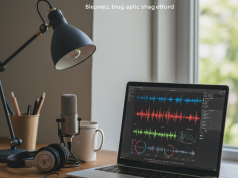The celebration of a successful free trial conversion often masks a sobering reality in the SaaS industry. While acquiring new customers generates excitement, the true challenge begins after that initial commitment. Industry studies consistently show that reducing customer churn by just 5% can increase profits by 25-95%.
Yet many SaaS companies pour resources into acquisition while treating retention as an afterthought. This imbalance proves particularly costly in subscription-based models where customer lifetime value directly impacts long-term profitability. The most successful SaaS businesses recognize that retention deserves equal, if not greater, attention than acquisition.
Inbound marketing principles – creating valuable content that attracts and engages your audience – apply powerfully to retention strategies. Unlike traditional retention tactics that interrupt customers with generic messaging, inbound approaches focus on delivering timely value that strengthens the customer relationship over time.
Onboarding: The Critical First 30 Days
The first month after conversion represents the highest risk period for customer churn. Users who converted from free trials often experience a motivation gap as they transition from exploration to implementation. Without proper guidance, many find themselves wondering how to extract the value they were promised.
Personalized onboarding sequences serve as the bridge across this gap. Rather than generic welcome emails, smart SaaS companies create segmented journeys based on how customers used the product during their trial. A user who heavily explored one feature should receive different onboarding guidance than someone who focused elsewhere.
Video walkthroughs addressing specific use cases prove particularly effective during onboarding. These short, focused tutorials help customers visualize success with your product in their specific context. Unlike generic product tours, these targeted guides answer the critical question: “How does this solve my particular problem?”
Success milestones deserve celebration throughout the onboarding process. When customers achieve meaningful progress – importing their data, completing their first project, or achieving a measurable result – acknowledging this progress reinforces their decision to commit to your solution.
For comprehensive resources on developing effective inbound strategies across the customer lifecycle, visit our complete guide at InboundMarketo.com.
Educational Content: Teaching Ongoing Value
Education represents one of the most powerful retention tools available to SaaS marketers. Customers who deeply understand your product become increasingly dependent on it and more resistant to competitor offers. Yet many companies stop educational efforts after initial onboarding.
Segmented email courses deliver ongoing education tailored to customer needs. These automated sequences can introduce advanced features, explain best practices, or explore industry topics relevant to product usage. The key lies in continuing the educational journey long after the sale.
Exclusive webinars for current customers create both learning opportunities and community connections. These events should balance product education with broader industry insights, positioning your company as a valuable resource beyond the software itself. Recording these sessions extends their value as on-demand resources.
Customer-only resource libraries provide self-service education that reinforces product value. These knowledge bases should include tutorials, templates, case studies, and implementation guides organized by use case rather than feature. This approach helps customers connect product capabilities to their actual business goals.
Feature announcement content deserves particular attention in retention marketing. Rather than simply listing new capabilities, effective SaaS companies frame updates around the specific problems they solve. This problem-centric approach helps customers see continued evolution of value rather than just feature expansion.
Community Building: Creating Switching Barriers
Customer communities create powerful retention effects that transcend product features. When users form connections with other customers, leaving your platform means losing access to this valuable network. Smart SaaS companies actively nurture these community bonds.
Private user groups on platforms like Facebook or Slack provide spaces for customers to share experiences, ask questions, and build relationships. The most effective groups balance company participation with customer-led discussion, creating organic advocacy that strengthens retention.
User-generated content programs turn customers into teachers and advocates. Case studies, guest blog posts, and usage tips created by customers provide social proof while giving contributors recognition that strengthens their connection to your brand. These programs reward your most engaged users while creating content that helps retain others.
Annual user conferences, whether virtual or in-person, create milestone moments that reinforce the customer’s identity as part of your product community. These events combine learning, networking, and inspiration that strengthen the emotional connection to your platform beyond mere utility.
Expert certification programs transform product proficiency into marketable professional credentials. As customers invest time in becoming certified experts, they develop skills that create significant switching costs if they were to adopt a competitor’s solution.
Customer Success: Proactive Value Protection
Customer success programs represent the evolution of traditional support from reactive problem-solving to proactive value delivery. While support responds to issues, success anticipates needs and ensures customers realize their expected outcomes.
Regular business reviews provide structured opportunities to demonstrate value realized through your platform. These sessions should connect product usage to specific business outcomes, reinforcing the return on investment and identifying opportunities for expanded value.
Usage analysis alerts enable proactive intervention when engagement metrics suggest risk. Declining logins, unused key features, or reduced users often signal potential churn before customers explicitly express dissatisfaction. Early intervention can address issues before they lead to cancellation.
Customer health scores combine multiple data points to assess retention risk systematically. These scoring systems might include product usage patterns, support interactions, contract details, and engagement with marketing content. The resulting insights enable targeted retention efforts for at-risk accounts.
Success planning creates shared roadmaps between customers and your team. These collaborative documents outline how customers will achieve progressive value over time, creating mutual accountability and clear expectations. Regular reviews of these plans ensure alignment as customer needs evolve.
Pricing and Packaging: Creating Growth Paths
Thoughtful pricing and packaging strategies create natural retention and expansion opportunities. Many SaaS companies focus on acquisition pricing without sufficient consideration for long-term revenue optimization.
Growth-oriented packaging provides clear upgrade paths as customer needs evolve. Rather than forcing customers to pay for features they don’t need, tiered offerings allow them to start at appropriate entry points with visible advancement opportunities as their requirements expand.
Usage-based components align pricing with value realization. When portions of your pricing model scale with increased usage, customers experience pricing that grows proportionally with the value they receive. This approach reduces friction around renewal increases.
Loyalty pricing rewards customer commitment with preferential terms. Multi-year contracts with appropriate discounts, grandfathered pricing for long-term customers, or loyalty program benefits acknowledge the increased value of retained customers over new acquisitions.
Strategic downsell options provide alternatives to complete cancellation. When customers face budget constraints or changing needs, offering reduced packages preserves the relationship until circumstances change. These options create significantly higher lifetime value than losing customers entirely.
Data-Driven Retention: Measuring What Matters
Effective retention marketing requires metrics that go beyond simple churn rates. Sophisticated SaaS companies monitor multiple indicators to identify both risks and opportunities throughout the customer lifecycle.
Expansion revenue metrics track additional revenue from existing customers through upgrades, additional seats, or complementary products. This measurement focuses teams on growing account value rather than merely preventing cancellations.
Time-based cohort analysis reveals how retention rates change across different customer segments over time. These insights enable targeted interventions at critical points in the customer lifecycle when specific groups demonstrate increased churn risk.
Feature adoption tracking connects specific product usage patterns to retention outcomes. By identifying features whose adoption correlates strongly with retention, marketing teams can prioritize educational content that drives engagement with these “sticky” capabilities.
Net revenue retention measures overall revenue changes from your existing customer base, including both churn and expansion. This comprehensive metric has become increasingly important to investors as SaaS markets mature and growth increasingly depends on customer expansion.
Implementation Framework: Where to Begin
Implementing comprehensive retention marketing requires systematic approaches rather than isolated tactics. Companies achieve the greatest impact by establishing foundational elements before adding complexity.
Start with segmentation based on both customer characteristics and behaviors. Different retention strategies apply to various customer types – enterprise versus small business, different industries, or varying use cases. Behavioral data adds another dimension, identifying engagement patterns that predict both risk and opportunity.
Build a cross-functional retention team rather than isolating responsibility in customer success. Marketing, product, sales, and customer success all influence retention outcomes and should collaborate on strategy development. This holistic approach prevents disconnected efforts that confuse customers.
Establish consistent measurement frameworks before implementing new retention programs. Without clear baseline metrics and ongoing measurement, determining program effectiveness becomes impossible. These frameworks should include both leading indicators that predict retention and lagging metrics that confirm outcomes.
Prioritize high-impact opportunities based on potential value rather than implementation ease. Some customer segments offer significantly higher retention improvement potential than others. Data analysis can identify these high-value targets for initial focused efforts.
Conclusion
Inbound marketing principles transform SaaS customer retention by shifting focus from company-centric interruptions to customer-centric value delivery. The most successful retention strategies provide ongoing education, community connection, and proactive success support aligned with customers’ evolving needs.
As SaaS markets mature and acquisition costs rise, retention marketing increasingly determines company valuation and long-term viability. Rather than viewing retention as a defensive necessity, forward-thinking companies recognize it as their greatest growth opportunity.
By applying inbound principles throughout the customer lifecycle – creating valuable experiences that customers actively seek rather than avoid – SaaS companies can build sustainable growth engines that reduce dependence on costly new customer acquisition.




